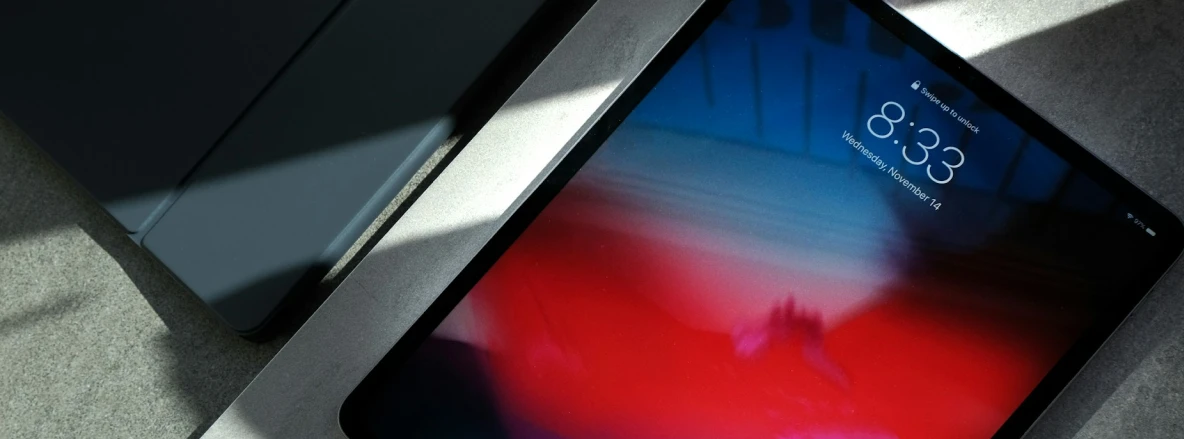On Tuesday, September 9, the tech world’s eyes were fixed on Cupertino, California – the site of the 2025 Apple Event. Since 2007, Apple has regularly announced new products and software via these showcases, livestreamed to a global audience from the Apple Park headquarters. Originally helmed by charismatic former CEO Steve Jobs, the public spectacles soon became an integral element of Apple’s brand. While current Apple chief Tim Cook may not share Jobs’ flair for the dramatic, the annual Apple Special Event is still a tentpole of the consumer tech calendar.
As with most product launches of this scale, rumours have abounded for months, from the nailed-on to the wildly speculative. While the long-awaited folding iPhone failed to materialize, the 2025 Apple Event still saw some momentous updates to Apple’s hardware suite. From reimagined iPads to a new Apple Watch generation and the largest update to an iPhone in years, the 2025 Apple Event symbolized the pace of change not only in Apple’s brand but the wider consumer tech world.
The entire show is available to watch on the Apple website or through the Apple TV app. For those who don’t have the time to take in the full 70-minute video, we’ve summarized every new product, update, and feature of the 2025 Apple Special Event below.
Every new announcement from the Apple Event 2025

The iPhone has long been Apple’s flagship product, accounting for the majority of the smartphones in the US and shifting over 3 billion units since its launch in 2007. Last week’s Apple Event saw the announcement of one of the largest updates in the smartphone’s 18-year history. The event saw the release not one but three new iPhone models: the 17, the 17 Pro, and Pro Max, and the all-new iPhone Air.
1. iPhone 17
While a new iPhone generation was an expected outcome of the Apple Event, the unveiling of the iPhone 17 nevertheless produced some welcome surprises. The most immediately apparent update is the selection of five new colorways. The screen, too, has been replaced with a larger 6.3-inch scratch-resistant ceramic glass panel (the larger dimensions of the iPhone 17 may be some comfort to those mourning the now-discontinued iPhone Plus). Under the casing, the iPhone 17 also received a complete overhaul. The new generation of iPhones features in-house Apple-produced chipsets. In theory, these provide better battery life and mark a significant shift in Apple’s manufacturing and procurement processes.
A 48MP front camera continues the iPhone’s reputation as one of the highest-spec photography phones on the market. The selfie camera now features a larger sensor, allowing for front-facing photos with a far wider field of view.
eSIMs only
In certain regions, the iPhone 17, iPhone 17 Pro, and iPhone 17 Pro Max are all eSIM-only, with no SIM card tray. All models offer storage for multiple active eSIM profiles, allowing users to simply and quickly download and store several eSIM profiles simultaneously. Along with new iOS updates like eSIM auto-switching, this capability highlights Apple’s commitment to eSIMs and recognition of the popularity of travel eSIMs.
As well as serving the growing number of users who are turning away from physical SIMs, the eSIM-only iPhone models utilize the extra internal space to pack in a larger battery.
2. iPhone 17 Pro and Pro Max
As one of Apple’s best-selling product lines, the iPhone Pro was also redeveloped for 2025. The iPhone Pro 17 is markedly different from the iPhone 17, both in terms of appearance and performance. In contrast to the iPhone 17’s classic glass screen and surrounding aluminium frame, the Pro is constructed with a wraparound aluminium shell that enables a truly edge-to-edge screen build. Other hardware upgrades include a new “vapor pocket” cooling system for particularly demanding tasks, as well as a larger camera sensor, allowing for greater zoom distances and wider fields of view in both the front and rear cameras.
The iPhone 17 Pro Max contains all the features of the Pro variant, with a larger 6.9-inch screen, longer battery life, and the option for up to 2TB of internal storage. The “built for eSIM” theme of the iPhone 17 is carried over to the Pro and Pro Max models. Both are available in eSIM-only variants, with the ability to download multiple eSIM profiles and automatically switch between them while travelling.
3. iPhone Air
Goodbye then to the iPhone Plus: with the launch of the Air, Apple is maintaining their current stable of four separate current iPhone models: The 17, the 17 Pro, the 17 Pro Max, and the Air. This means an end (for now) to the more budget-friendly iPhone Plus line, first introduced in 2014. This decision may not be permanent, however – Apple has a history of resurrecting products.
As with the iPad and Mac Air lines before it, the iPhone Air is a triumph of minimalist design, upending expectations of what consumer hardware should look and feel like. The body is impossibly slim – 5.6 millimeters, with the front camera lens extending a fraction beyond the rest of the body. Despite its skeletal profile, the iPhone Air is designed to be durable (the notoriously bendable iPhone 6 no doubt weighed heavily on the minds of the Apple designers tasked with creating the Air).
To make this possible, Apple redesigned the iPhone's internal structure completely: the Air features a single front camera lens instead of two and a high-density battery that delivers similar battery life and charging times to the iPhone 17. Most notably, Apple hasn't included a SIM tray on the iPhone Air – the phone is only available with eSIM connectivity, marking the first eSIM-only iPhone since the 2022 iPhone 14.
4. Apple Watch 11
Continuing the slimline theme started by its predecessor, the Apple Watch Series 11 is the thinnest Apple Watch yet. Despite its reduced dimensions, the Apple Watch Series 11 features improved speed and cellular connectivity over the Series 10, including the ability to connect to 5G networks. Apple’s continued championing of eSIM technology is integral to the design of the Series 11 Watch. By downloading an Apple Watch data plan from an official Apple carrier partner like BetterRoaming, users can get online anywhere with their Watch at 5G speeds.
Elsewhere, the Series 11 continues the Apple Watch’s focus as a health and fitness companion, with improved sensors for monitoring cardiovascular health and creating an early alert system for hypertension and high blood pressure. It should be noted that the Apple Watch is not a medical device, and at the time of writing, it has not been cleared for use by the FDA as a hypertension monitor.
5. Apple Watch SE 3
The Apple Event 2025 also saw the debut of the latest generation of Apple’s entry-level SE Watch line, the SE 3. Despite its relatively low cost, the SE 3 contains most of the features of the Series 11, including the high-spec M10 processor. The new SE 3 also introduces ‘gesture control’, or the ability to manage certain functions of the Watch by simply flicking the wrist – a feature previously only available on the core Apple Watch line. More detailed health tracking, a built-in speaker, always-on display, and a new, faster charging system round out the new upgrades to the SE 3. Like the Series 10, cellular models of the SE 3 will also be able to connect to 5G data with a cellular Apple Watch Plan.
6. Apple Watch Ultra 3
The 2025 Apple Event saw upgrades to every model in the Apple Watch lineup: the high-spec Ultra line was refreshed by the new Ultra 3. Cosmetically, the Ultra 3 closely resembles its predecessor, albeit with a slightly larger screen. Functionally, Apple has made significant improvements to the Ultra 2.
All Apple Watch Ultra models have been built with cellular connectivity as standard. The Ultra 3 improves on this with 5G connectivity, providing better coverage and data speeds when using mobile data with an Apple Watch carrier like BetterRoaming.
Certain regions even provide satellite connectivity, boosting the Ultra’s off-the-grid capabilities. This satellite coverage also extends to non-calling contexts, like the Apple Find My function and Emergency SOS. Coupled with the new, larger battery and sports-ready bands, the Ultra 3 is a capable companion for longer outdoor excursions.
7. AirPods Pro 3
The world's best-selling headphones received a major update in 2025. Better sound, better fit, and new tips provide a more nuanced listening experience. For most users, the improved sound isolation and active noise cancellation (ANC) are the most notable differences: the AirPods Pro 3 are reported to deliver twice as much ANC as the AirPods Pro 2.
Live Translation
One of the most talked-about features of the 2025 Apple Event is the all-new live translation feature integrated into the AirPods Pro 3. Powered by Apple’s divisive Apple Intelligence AI software, live translation claims to deliver real-time speech translation capabilities, enabling users to comprehend conversations in foreign languages as they occur. In theory, two people wearing AirPods Pro 3 could have a near-real discussion while speaking completely different languages. Live translation is part of a suite of new Apple features that directly benefit international travelers, including the eSIM auto-switching ability of the iPhone 17. Using a travel eSIM with an iPhone is now easier than ever.
An eSIM future
A common thread through many of the new releases was their ongoing enablement of eSIM technology. Apple first added eSIM connectivity to the iPhone in 2018 and released its first eSIM-only iPhone in 2022. Both releases marked watershed moments in public acceptance of eSIM connectivity, as the improved convenience and reliability of eSIMs were introduced to a mass consumer audience.
Since then, global adoption of eSIM has soared, with the format predicted to overtake SIM cards as the global standard by 2030. The 2025 Apple Event typified this shift with a spate of new eSIM-oriented features across the Apple product catalog. As well as the eSIM-only Air, the new generations of iPhone will also run the iOS 26 operating system, which is tailor-made to support eSIM services.
eSIM data plans
BetterRoaming iPhone, iPad, and Apple Watch eSIMs
The new generation of eSIM-only iPhones illustrates an ongoing shift in the way consumers are getting online. The increasing availability of eSIM-compatible devices and a growing familiarity with the service mean eSIMs are fast becoming the standard SIM format. Just like a local SIM card, travel eSIMs let users connect to mobile data abroad, without paying international roaming fees. Unlike a local SIM card, travel eSIMs can be downloaded ahead of time, in seconds, and activated the second the user arrives at their destination.
New Apple Watches also come with eSIM connectivity, available from a handful of selected Apple partners like BetterRoaming. Visit our Apple Watch page now to learn more about adding a cellular plan to an Apple Watch.









